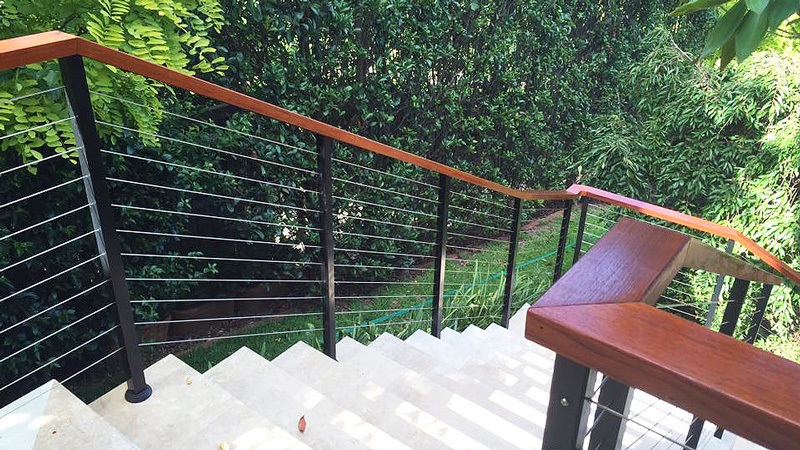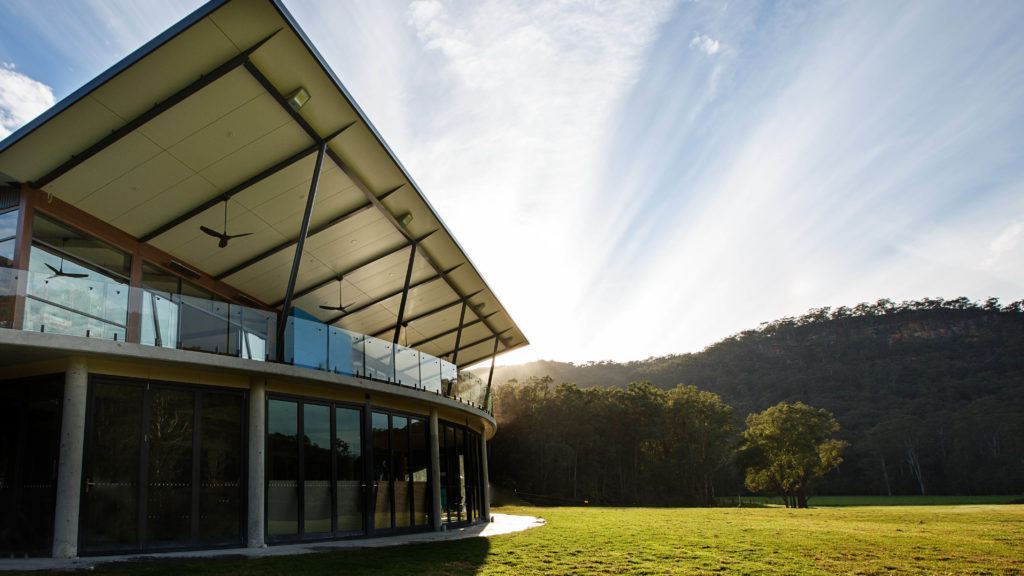Making sure your balustrades and handrails are compliant with regulations is an essential part of balustrade installation and maintenance.
If you’re unsure whether your current or planned balustrades are compliant, read our ultimate guide to handrail and balustrade compliance.
What are balustrades?
Balustrades are barriers used to protect people from falls. They are commonly found on disability ramps, stairways and balconies. Most are made from a series of posts or panels that are installed side-by-side to form a line. Balustrades provide both safety and style to any space they’re installed in.
What are handrails?
Handrails aren’t so much different to balustrades as they are a part of what makes a balustrade. They are the railings that help provide guidance and support when climbing stairs or ramps. While the posts or panels of the balustrade are separate, the handrail runs the length of the balustrade and helps keep it connected.

What is balustrade compliance?
Balustrade compliance is all about making sure the balustrades are safe and comply with industry standards. This includes requirements such as being the right height, correct spacing between bars, and adequate load-bearing capacity to prevent falls or other accidents.
Why is balustrade compliance important?
Balustrade compliance ensures no one gets hurt while using a balustrade, as well as making sure ledges that require a balustrade have them. Because the consequences of not having a compliant balustrade can be life-threatening, penalties for violating the Australian balustrade building code can be harsh.
The Australian balustrade compliance building code
While some states can have slightly different handrail and balustrade compliance regulations, the following regulations comply with the Australian balustrade compliance building code and are a strong indication of how your balustrades should be.
Balustrade compliance for disability ramps
Disability ramps are essential for people who require wheelchairs, walking frames, or who are in some other way unable to walk up stairs. These people can have issues with their mobility, which means compliance for disability ramp balustrades is particularly scrutinised.
Disability ramp balustrade height
If the distance between the top of the ramp and the ground exceeds 1m, your balustrade must also be 1m. For ramps less than 500mm high off the ground, the balustrade must be 865mm tall. Essentially, the taller the ramp, the taller the balustrade needs to be.
Disability ramp balustrade gap widths
Gaps between balustrade posts must be close enough that a 125mm sphere can’t pass through them. This is to simulate whether a small child could fit through and injure themselves.
Disability ramp balustrade strength
Disability ramps need to be strong enough to withstand someone falling into them. Disabled people may struggle with their balance, so these balustrades need to be able to support their full weight.
The balustrade building code states that the balustrade needs to be able to withstand a 0.6kN force, while the handrail needs to support a 0.4kN force. This force must be withstood regardless of whether it’s caused by downward, inward or outward pressure.
Balustrade compliance for stairs
Falling down a flight of stairs can cause terrible injuries, and even be fatal. This makes balustrade compliance for stairs incredibly important.
Stairs balustrade height
The height of balustrades for stairs must be 1m above the floor or ground, if the distance between the ground and the bottom of the stairs exceeds 1m.
So if there is potential to fall more than a metre from the top of the stairs to the ground, your balustrade needs to be a metre tall.
Stairs balustrade gap widths
Just like with disability ramps, gaps between stair balustrade posts must be close enough that a 125mm sphere can’t pass through them. For stairs, this is taken from the nosing line of the stairs, which is measured by connecting the point of each step to create a straight line.
Stairs balustrade strength
Stair balustrade strength requirements are the same as disability ramp balustrades, with the balustrade itself needing to withstand 0.6kN of force, and the handrail needing to withstand 0.4kN.

Balustrade compliance for balconies
Balconies and decks are elevated areas where the ledge is often high enough to cause a fatal injury if someone falls. This makes balcony balustrades incredibly important.
Balcony balustrade height
The general rule for balustrades is that any ledge higher than 1m from the ground requires a 1m tall balustrade, which means balconies obviously require them.
Once a balustrade is higher than 4m from ground level, Australian balustrade building codes mandate that it cannot be climbable. This means it will need to be made of solid panels rather than wire or posts with large gaps between them.
Balcony balustrades gap widths
Gaps between balustrade posts are similar to disability ramps and stairs. They must also be close enough that a 125mm sphere can’t pass through them.
Just remember, if the balcony is 4m above ground level it cannot be climbable. Gaps are considered to be a risk because people, especially children, can take advantage of them when trying to climb a balustrade. That means when your balcony exceeds the 4m mark,. your best bet is to not have gaps at all. Opt for solid panels or metal, wood or glass instead.
Balcony balustrade strength
Balconies are an interesting situation because they are less likely to have force applied to them. They often don’t have a handrail that people are dependent on for movement. On the other hand, falling through a balcony balustrade is very likely to be fatal, so it needs to be able to withstand the weight of a human body.
The force of a falling human body is averaged as 0.6kN, so the standard required strength of most balustrades is still applied to balconies.

Betta Balustrades
If you’re installing a new balustrade, or you’re wondering if your existing balustrade is compliant, getting a professional to check for you is the best way to have peace of mind.
At Betta Balustrades, we provide high-quality balustrades for clients across the entire Sydney, Central Coast and Newcastle corridor.
If you want a balustrade that looks incredible, lasts the lifetime of your home and is 100% compliant with the Australian balustrade building code, get in touch today.
If you’d like to see our work for yourself, check out our gallery.




